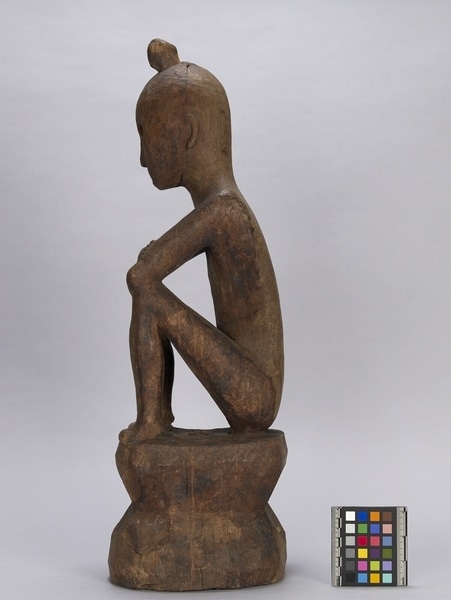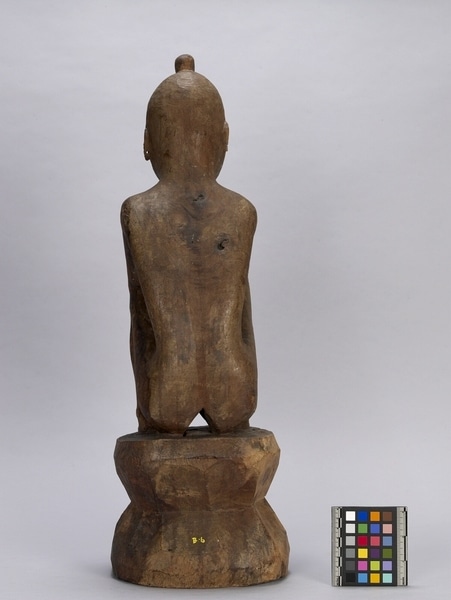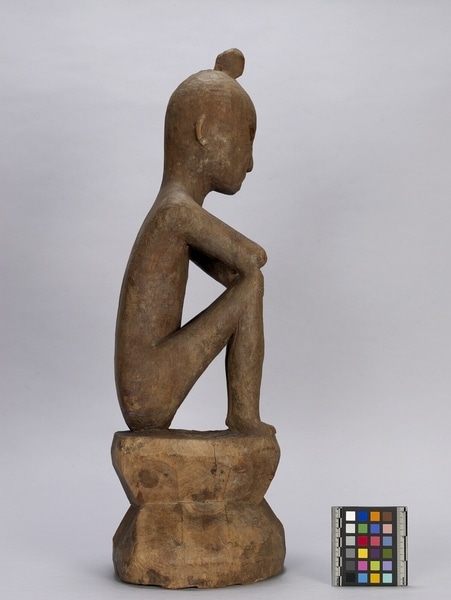Bulul Figure Item Number: Ia332 from the MOA: University of British Columbia




Description
Male carved figure. The wooden carving shows a male with his hair in a bun at the top, sitting with his arms folded over his knees. The figure is on a thick base.
History Of Use
Bulul protect the production of rice, the most important component of the Ifugao diet. The figures are carved by specialists who are usually from the kin group of the patron. Ceremonies accompany each stage of production. The first seeks the approval of deities in the choice of wood, which is taken from the narra tree. The “entrance” ceremony takes place when the roughed-out carving is carried into the owner’s house, where it is finished. Carving is done during the day, with the nights devoted to dancing and eating. Once completed, the myth relating to its origin is recited, and past powers bestowed are transferred to the present. The figures are believed to make rice grains multiply and to guard the harvest from vermin and thieves.
Item History
- Made in Kiangan, Ifugao, Philippines between 1900 and 1925
- Owned by Julia Tecson and Miguel Tecson before November 16, 1987
- Received from Julia Tecson (Donor) and Miguel Tecson (Donor) on November 16, 1987
What
Who
- Culture
- Ifugao
- Previous Owner
- Julia Tecson and Miguel Tecson
- Received from
- Julia Tecson (Donor) and Miguel Tecson (Donor)
Where
- Holding Institution
- MOA: University of British Columbia
- Made in
- Kiangan, Ifugao, Philippines
When
- Creation Date
- between 1900 and 1925
- Ownership Date
- before November 16, 1987
- Acquisition Date
- on November 16, 1987
Other
- Item Classes
- carvings & sculpture
- Condition
- fair
- Accession Number
- 1262/0249